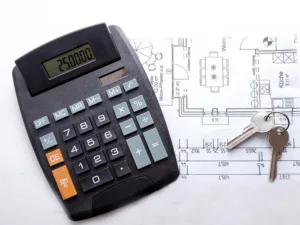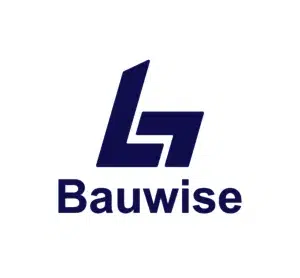In the dynamic world of construction, managing projects efficiently is crucial for any company seeking success. At the heart of this quest lies a powerful tool – construction project management software. This technological ally not only brings order to chaos but can significantly streamline your operations, making tasks like scheduling, budgeting, communication, and documentation a breeze. However, with an array of options available in the market, choosing the right software for your specific needs can seem like an overwhelming task. This is where we step in.
Welcome to our comprehensive guide on ‘How to choose the right construction project management software’. Our aim here is to illuminate the path towards finding the perfect software that aligns with your business objectives, team dynamics, and project requirements. We will take you through a systematic approach, examining key software features, cost considerations, the importance of testing, vendor reputation, and implementation.
By the end of this article, you will be equipped with the knowledge and insights you need to make an informed decision. Whether you’re a construction project manager in big construction firm looking to switch platforms or a small business owner dipping your toes in the water, we’ve got you covered.
So let’s get started on this journey to uncover the best construction project management software for your needs. After all, the success of your projects depends on it.
Table of Contents
1. Understanding Construction Project Management Software
In essence, construction project management software serves as a powerful tool to manage, plan, and execute construction projects. From the first blueprint to the final walkthrough, it accompanies you and your team throughout the journey, ensuring nothing falls through the cracks.
But what exactly is it and why is it such a game-changer in the construction industry?
To put it simply, construction project management software is a platform designed to handle the unique intricacies of construction projects. It’s more than just a digital organizer. It’s an all-encompassing system that consolidates several functions into a single interface, reducing the risk of errors, improving communication, and promoting efficiency.
Construction projects are notoriously complex, involving many moving parts and teams of architects, engineers, and construction workers. With tasks ranging from resource allocation and scheduling to document management and risk assessment, coordinating all these elements can be a daunting task. That’s where project management software steps in, helping you keep track of every minute detail.
It’s essential for a construction project manager to ensure the chosen software aligns with both the goals and requirements of managing construction projects effectively, catering to the specific needs of the project and the construction business.
Now, project management software comes in various forms, each designed to suit different needs. Some are task-oriented, focusing on assigning and tracking individual tasks. Others are schedule-oriented, where the primary feature is a robust scheduling system that allows for detailed project timelines. There’s also document control software, financial management software, and even software that blends all these aspects into an integrated solution.
When choosing the right software, it’s crucial to understand what features it offers. Here are a few key functionalities you should look out for:
1. Scheduling: The ability to plan tasks and resources in a timeline view, including dependencies and milestones.
2. Task Management: Assigning tasks to team members, setting deadlines, and tracking progress.
3. Document Control: Storing, organizing, and managing important project documents in a central location.
4. Collaboration Tools: Features that enable team communication and collaboration, such as messaging, shared calendars, and file sharing.
5.Budgeting and Cost Control: Tracking project costs and comparing them against budgets.
6. Reporting: Providing visual dashboards and reports to track project performance.
7. Risk Management: Tools for identifying and managing potential risks and issues.
As you delve deeper into your search for the perfect construction project management software, remember that understanding your specific needs is paramount. Keep these key features in mind, but also consider the unique challenges and requirements of your own projects, especially how they can manage construction projects from initiation to completion, ensuring comprehensive oversight and coordination.
2. Determining Your Needs
Before embarking on the quest for the perfect construction project management software, it’s critical to take a step back and examine your specific needs. After all, what works for one company may not necessarily work for another. Your construction project management software should be a tailor-made solution, fitting seamlessly into your business processes and amplifying your team’s efficiency.
1. Understanding Your Project Complexity
First and foremost, consider the size and complexity of your projects. Are you primarily involved in large-scale commercial construction, or do you handle smaller residential projects? A tool designed for large, multi-tiered projects may be unnecessarily complex for smaller teams with simpler projects. Similarly, a tool that’s perfect for a small residential construction company might lack the robust features needed to manage a skyscraper’s construction.
2. Assessing Team’s Capabilities and Technical Skills
Next, consider your team’s technical skills. Is your team tech-savvy, ready to embrace cutting-edge digital solutions? Or would a simpler, more user-friendly interface be more suitable? It’s crucial to choose software that your team can easily understand and utilize; otherwise, the tool meant to facilitate work might become a stumbling block.
3. Identifying Project Needs
Also, think about your unique project needs. Do you require specific compliance functionalities due to industry regulations? Are you working on projects that demand advanced risk management tools? Or perhaps you need a tool with a strong focus on team collaboration because your team is scattered across different locations.
Once you’ve assessed these factors, you’ll have a clearer picture of what you need from your construction project management software. This understanding will act as a compass, guiding you towards the right software in a sea of options.
3. Evaluating Project Management Software Options
Now that you have a clear understanding of what you need, it’s time to dive into the sea of options available in the construction project management software market. As exciting as this step might be, it’s also critical to approach it systematically. Remember, the goal is to find software that aligns with your specific needs, not just the most popular or feature-rich one on the market. Here are some key aspects to consider:
1. Usability: How intuitive and user-friendly is the software? Can your team get up to speed quickly or will there be a steep learning curve? A well-designed, easy-to-use interface can significantly enhance your team’s productivity and overall user experience.
2. Integration: Does the software integrate smoothly with other tools you already use, like accounting software, email platforms, or cloud storage services? Seamless integration can lead to a more efficient workflow by eliminating the need for manual data transfer.
3. Integration with Project Management Tools: It’s crucial to select software that not only integrates with the tools you currently use but also connects seamlessly with other business systems and project management tools. This includes accounting, budgeting, scheduling, and document management systems. The ability to share data and processes across these platforms, supported by a software developer’s kit for custom integrations, can significantly enhance workflow efficiency and project oversight.
4. Mobile Accessibility: In the fast-paced construction world, the ability to access your project management software from anywhere can be a huge advantage. Look for software that offers a fully functional mobile version or app.
5. Customizability: Can the software be tailored to fit your specific needs? Whether it’s custom workflows, reports, or user roles, a solution that adapts to your business can be more beneficial than a one-size-fits-all tool.
6. Security: Construction projects often involve sensitive data. Make sure the software you choose has robust security measures in place to protect your information.
7. Updates and Improvements: Technology evolves rapidly, and your project management software should keep pace. Look for a vendor that regularly updates its software, adding new features and improving existing ones.
As you explore different options, take advantage of product demos and free trials whenever possible. These can give you a hands-on experience of how the software works and whether it fits your needs. We will delve deeper into the importance of trials in the next section, but for now, remember that the process of evaluating software options should be thorough and aligned with your unique needs and circumstances.
4. Considering the Cost
When it comes to selecting construction project management software, the cost is undeniably a significant factor. However, it’s not just about how much you pay upfront. To truly understand the cost of the software, you need to take a more holistic view, considering both the initial cost and the potential return on investment. Here’s how to approach this:
1. Understanding Pricing Models
Construction project management software comes with different pricing models. Some vendors offer a subscription-based model where you pay a monthly or yearly fee. Others might charge based on the number of users or projects. There might be additional costs for extra features or services. Make sure you fully understand what you’re paying for and how the pricing might change as your needs evolve.
2. Calculating Return on Investment (ROI)
Investing in project management software is just that – an investment. It’s not just about the price tag; it’s about the value it brings to your business. Does the software help you complete projects more efficiently, reducing labor and materials costs? Does it improve client satisfaction, leading to more business opportunities? These factors can result in a positive ROI, making the software a worthwhile investment.
3. Considering Other Cost Factors
There are also other cost factors to consider. For example, how much will it cost to train your team on the new software? What about the cost of migrating data from your old system? Is there a fee for customer support or updates? These “hidden” costs can add up, so make sure to factor them into your decision.
In the end, the cheapest option might not always be the best, nor the most expensive the most efficient. It’s about finding a balance between what you’re willing to invest and the value you get in return.
5. Taking a Test Drive
Once you’ve identified a few potential construction project management software options, it’s time to take them for a spin. Just as you wouldn’t buy a car without test driving it, you shouldn’t invest in software without seeing how it performs in action. Here’s how to make the most out of your “test drive.”
1. Using Free Trials and Demos
Most software vendors offer free trials or demos, allowing you to try their product before making a commitment. This is your opportunity to see how the software fits into your workflow, how user-friendly it is, and whether it meets your needs.
2. Evaluating User Experience
Pay close attention to the user experience during the trial period. Is the software intuitive and easy to use? How quickly can you and your team learn to navigate it? A platform with a steep learning curve may cause more frustration and wasted time than it’s worth, no matter how powerful its features are.
3. Testing Key Features
Remember the list of features you identified as necessary for your projects? Now’s the time to test them. See how well each software handles these features and if they meet your expectations.
4. Seeking Feedback from Team
Don’t make this decision in isolation. Your team will be using the software regularly, so their input is invaluable. Have a diverse group of users test the software and provide feedback on its functionality and ease of use.
6. Checking Customer Support
Finally, take this chance to evaluate the software vendor’s customer support. Are they responsive and helpful when you have questions or run into issues? Good customer service can make a huge difference in your overall experience with the software.
Remember, the goal of this “test drive” is to see if the software is a good fit for your company’s workflow and needs. The more thorough you are during this stage, the more likely you are to find a solution that truly benefits your business.
1. Checking Vendor Reputation and Support
By now, you’ve probably narrowed down your options to a few solid contenders. However, before making your final decision, there’s another essential factor to consider – the reputation of the software vendor and the level of support they provide.
Software isn’t just a one-time purchase; it’s an ongoing relationship with the vendor. Over time, you may need their assistance to troubleshoot problems, upgrade features, or adapt the software to changing needs. That’s why it’s crucial to ensure you’re partnering with a reliable, supportive vendor.
2. Researching Vendor Reputation
Start by researching the vendor’s reputation. Look for customer reviews and testimonials online. Pay particular attention to reviews from companies similar to yours in size and industry. Did they have a positive experience with the vendor? Was the software effective in managing their construction projects?
3. Analyzing Customer Support
Next, look at the level of customer support the vendor provides. Is their support team easy to reach? Do they offer a variety of support options, like phone, email, or live chat? When you have a pressing issue, the last thing you want is to be left hanging without assistance.
4. Checking Updates and Future Development
Finally, consider the vendor’s track record for software updates and future development. Does the vendor regularly update the software to fix bugs, add new features, and keep up with changing technology? A company that invests in its product is more likely to provide a robust and up-to-date solution.
Remember, choosing the right construction project management software is as much about choosing the right partner as it is about choosing the right tool. By taking the time to check the vendor’s reputation and support, you can ensure a smoother and more successful implementation.
7. Making the Decision
Having followed the steps above, you’re now armed with all the knowledge you need to make an informed decision. You’ve defined your needs, evaluated different software options, considered the costs, test-driven potential candidates, and checked vendor reputation and support. Now, it’s time to make the final choice.
1. Comparing Options
Start by laying out all the information you’ve gathered about your top contenders. Compare them side by side, considering how each one matches up to your specific needs. Look at the features, cost, user-friendliness, integration capabilities, customer support, and the vendor’s reputation.
2. Involving Your Team
This decision shouldn’t be made in a silo. Your team will be using the software daily, so their opinions matter. Encourage open discussions and consider their feedback. They may highlight aspects you hadn’t thought of.
3. Considering Long-Term Needs
When making your choice, remember to keep your long-term needs in mind. While one software might seem perfect for your current projects, will it still serve you effectively as your company grows and takes on more complex projects?
4. Reaching a Consensus
In the end, the best construction project management software is the one that meets most, if not all, of your needs and fits within your budget. It might require some compromises, but the goal is to find a solution that will improve efficiency and streamline your construction projects.
8. Implementing Your Chosen Software
Choosing the right construction project management software is just the first step. The real success lies in implementing it effectively. Here’s how to get your team on board and make the most of your new tool:
1. Training Your Team
To get the most out of your new software, your team needs to understand how to use it. Plan for comprehensive training sessions, whether they’re provided by the vendor or conducted internally. Make sure to cover all the features your team will be using regularly.
2. Migrating Data
Switching to a new software usually involves migrating data from your old system. This process should be planned carefully to avoid data loss. It might be worth hiring an expert or seeking assistance from the software vendor.
3. Gradual Implementation
Instead of making a complete switch overnight, consider implementing the new software gradually. Start with a few projects or a small team and gradually expand its use as everyone gets comfortable.
4. Collecting Feedback
After implementation, regularly collect feedback from your team. Are they facing any challenges? Are there features they’re not using or ones they wish were included? This feedback can help you tailor the software to your needs and address any issues early on.
5. Ongoing Support and Updates
Finally, keep in touch with the software vendor for ongoing support and updates. Regular updates not only provide new features but also ensure the software remains secure and efficient.
With these steps, you’re on your way to successfully implementing your chosen construction project management software. Remember, this is a long-term investment that can significantly streamline your construction projects and boost your team’s productivity.
Conclusion
Choosing the right construction project management software can feel like an overwhelming task. There are countless options on the market, each with their own set of features, pricing models, and learning curves. However, with a systematic approach, you can successfully navigate this landscape and find the perfect solution for your business.
Remember, it all starts with understanding your specific needs. Once you’ve outlined the features you require, you can evaluate your options, considering factors such as cost, usability, vendor reputation, and support. Never skip the step of taking a trial run, as it’s one of the best ways to evaluate if the software will fit into your workflow.
Lastly, remember that purchasing the software is just the first step. Implementing it effectively within your organization is what will truly determine its success. With the right training, gradual implementation, and ongoing feedback and support, you can maximize your investment and make your construction project management more efficient and streamlined. For project managers, this means utilizing the software to track progress against plans and connect real-time field data with the front office, enabling them to manage performance and risks effectively.
Choosing the right software may require some effort and time upfront, but the potential benefits for your project management are well worth it. Good luck in your journey towards finding the perfect construction project management software!
About the Author

Mikk Ilumaa
Mikk Ilumaa is the CEO of Bauwise, a leader in construction financial management software with over ten years of experience in the construction software industry. At the helm of Bauwise, Mikk leverages his extensive background in developing construction management solutions to drive innovation and efficiency. His commitment to enhancing the construction process through technology makes him a pivotal figure in the industry, guiding Bauwise toward setting new standards in construction financial management. View profile






